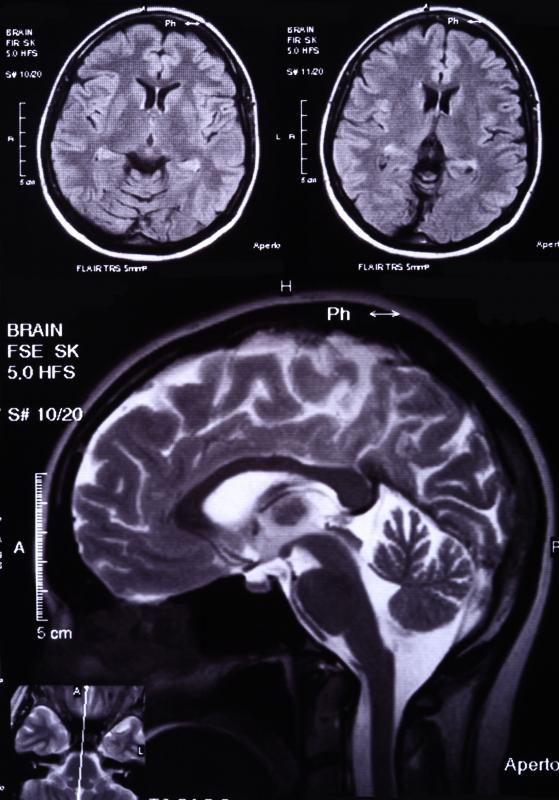At TheHealthBoard, we're committed to delivering accurate, trustworthy information. Our expert-authored content is rigorously fact-checked and sourced from credible authorities. Discover how we uphold the highest standards in providing you with reliable knowledge.
What Is the Periaqueductal Gray?
The periaqueductal gray, or PAG, is an area of the mammal brain that plays several important roles in mediating pain perception, reproductive behavior, and cardiovascular activity. Found in the midbrain, below the cerebrum and cerebellum, and above the brainstem, the PAG is a vertically oriented area that surrounds the cerebral aqueduct. The aforementioned roles explain some of the connections between it and other areas of the brain. Additionally, this area may allow certain opioid painkiller drugs to work, as it seems to be the site where they modify normal pain-regulating activity.
Primarily, the periaqueductal gray function that has been well-studied is the way it influences the perception of pain. Connections between brain cells, or neurons, in the PAG run to an area of the medulla known as the nucleus raphe magnus. From this nucleus, connections run to all levels of the spinal cord. When these PAG neurons are stimulated, they in turn cause corresponding medulla cells to fire and send messages to the spinal cord. This chain of activity results in pain signals sent from the body to be inhibited, diminishing the feeling of pain.

Another important duty of the periaqueductal gray seems to be an involvement in reproductive activity. Some regions of the PAG, when activated in animals, result in sexually receptive behavior in females. Connections between the PAG and the hypothalamus may play an important role in this response. Even in humans, differences exist between many males and females in the size of this area. Such disparities may help account for why some studies show differences in the effectiveness of drugs that affect the PAG between men and women.

Studies at the University of Naples in Italy have shown that the periaqueductal gray can affect cardiovascular activity. Certain cells in the PAG seem to be arranged into columns capable of raising or lowering blood pressure. Stimulation to neurons in these columns can cause changes the resistance that veins have to passing blood. Under normal circumstances, the brain may release transmitting molecules, called neuropeptides, which can allow blood pressure to be regulated.

The roles of the periaqueductal gray may extend beyond those listed, as well. Rats have some defense reflexes, such as freezing behavior, that may be related to activating specific neurons in the PAG. Consciousness in various species may require the presence of this area as well. The reasoning for this is that damage to the PAG can lead to unconsciousness. Future research among animals and humans may reveal additional functions of this area, as well as expand the understanding of currently recognized responsibilities.
AS FEATURED ON:
AS FEATURED ON:















Discuss this Article
Post your comments